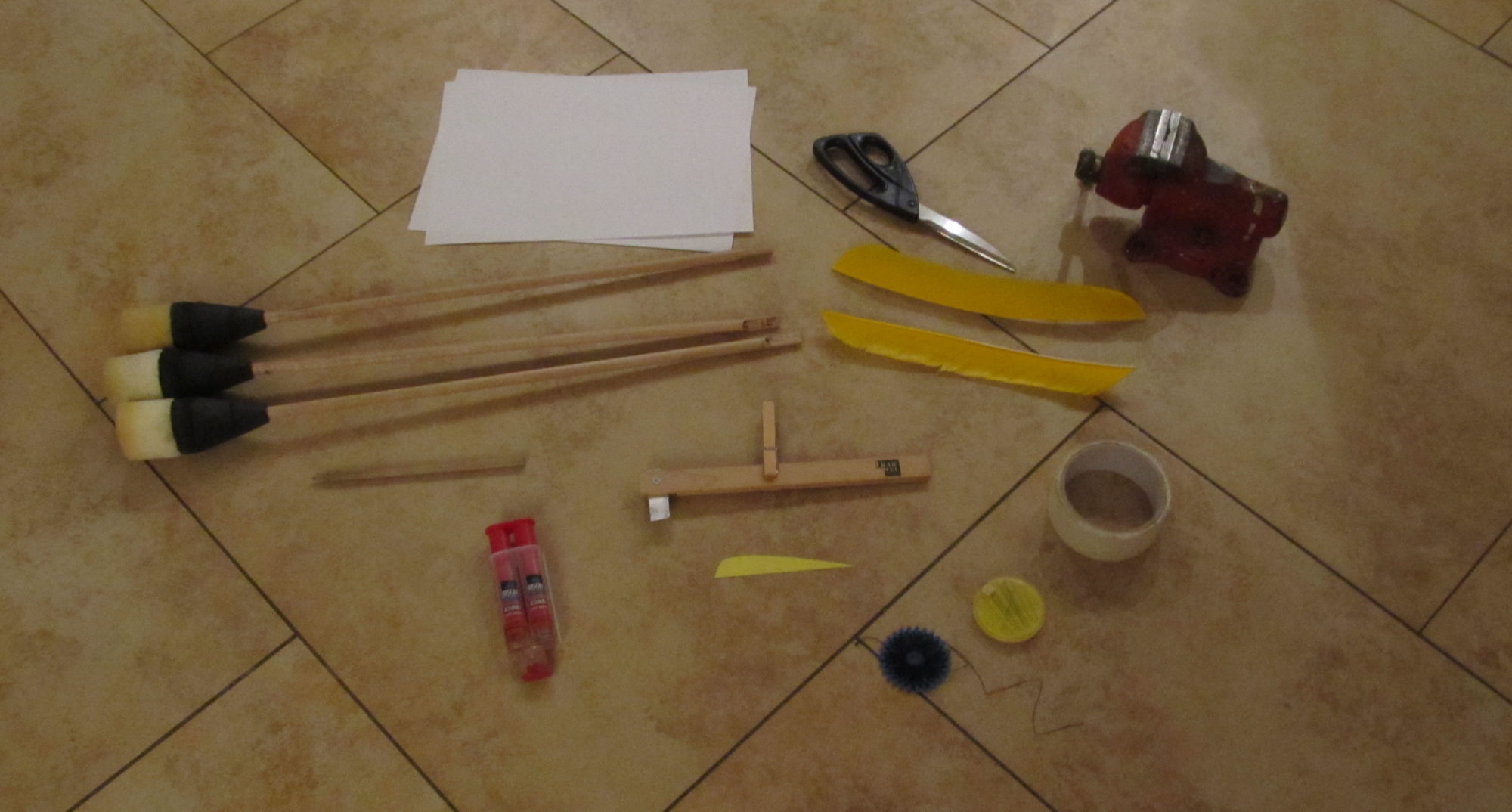We play a rough and tumble game, so no boffer weapon can stay pristine forever. Knowing how to repair a weapon is a useful talent, which will prolong the life of your equipment and keep your wallet happy. Lets run down some common problems you’ll see, and how to repair them. Continue reading “Wear and Tear: Swords”
Eye Safety with Boffer Weapons
I think boffer weapons are pretty safe, which may surprise you since one did this to me the other day. It looks a little gruesome, but I can assure you it would have been significantly worse if the weapon that struck me wasn’t properly “eye safe”. As it was, I came away with just a small cut to the eyelid and no real damage. Not even a black eye. This seems like a good opportunity to talk about the importance of eye safety when building boffer weapons. An eye safe weapon saved my eye, and they may save more in the future. Continue reading “Eye Safety with Boffer Weapons”
Stuff Maker’s Weapons Rack
I have never seen a better use for seven sticks on a foam fighting field.
Why Low Profile Weapons
Why low profile?
In foamsmithing, the phrase low profile when refers to boffer weapons that make use of more compact and lower volume designs. While a sword can certainly be low profile, the term more typically refers to thrusting weapons, as stabbing tips are traditionally bulky components.
Advantages of low profile designs:
- They’re lighter
- The more maneuverable in combat
- They have a more realistic appearance
- There’s no outer layer of soft, breakable foam to deteriorate before the rest of the weapon
- No fucking flop! (Where the mass of the open cell foam moves off to the side during an angled strike)
For years, the conventional approach to building stabbing tips was to apply a large volume of open cell foam on a base of bluefoam. This led to fairly bulky, round stabbing point. Since then, innovations in materials and techniques over the years have led to the production of smaller designs, especially for daggers, spears, and javelins. The primary new material for stabbing tips is no longer the traditional open cell foam (which could have included nerf footballs, couch foam, computer packing foam, etc.) but now is a form of Ensolite, usually in the form of “Marine Foam”, Stadium Seat Cushions, or Yogamat. Ensolite is a very spongy closed cell foam that lends well to a lower profile stabbing tip using the principle of progressive resistance.
 Another innovation is the inclusion of a swatch of leather or plastic capping the weapon after it has its first wrap of foam at the tip. Place this disc on the end of the core (depicted to the left) after a base of foam has been built flush with the end of the core. This technique spreads the force of the impact of the core to a wider surface area, allowing more absorption by the stabbing tip foam. In conjunction with the Ensolite, these two imrpovements make very safe, lower profile weapons that look better and are easier to use.
Another innovation is the inclusion of a swatch of leather or plastic capping the weapon after it has its first wrap of foam at the tip. Place this disc on the end of the core (depicted to the left) after a base of foam has been built flush with the end of the core. This technique spreads the force of the impact of the core to a wider surface area, allowing more absorption by the stabbing tip foam. In conjunction with the Ensolite, these two imrpovements make very safe, lower profile weapons that look better and are easier to use.
5 Steps to a More Realistic Weapon
Fantasy is fun, but much joy can be derived from embracing realism. Creating an authentic persona, garb, and armor can be fairly straightforward. Find what types of pants they wore during your time period, and acquire a pair. Easy.
Things are not so simple when it comes to weapons. For safety’s sake, the steel of true weapons has been replaced with foam and fiberglass. This creates limitations that a seeker of realism must work around. Continue reading “5 Steps to a More Realistic Weapon”
Why PVC Sucks
John and I were having a discussion regarding different core materials for javelins. A lot of people, including me, have argued for a long time that PVC is completely useless as a core material for boffer weapons. Not “bad” or “substandard” but completely worthless, put it with lead pipes and cardboard tubes, nobody should ever use it again. Continue reading “Why PVC Sucks”
